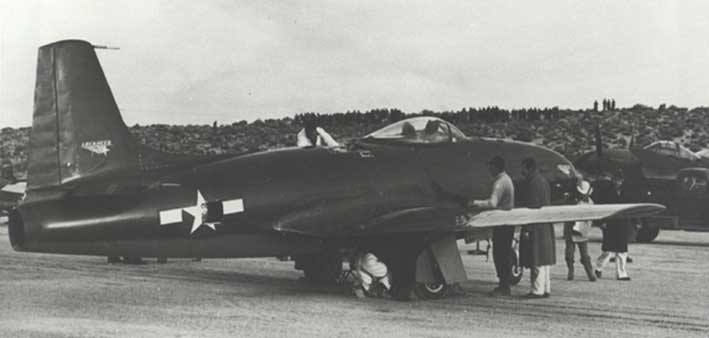

History:
Designed by Clarence L."Kelly" Jonhson and assisted by William P Ralston
& Don Palmer, the XP-80 dates back to late 1942 when the USAAF (In view
of Lockheed's earlier studies in jet powered aircraft the L-133)
transferred the preliminary studies undertaken by Bell, for a single engined
jet powered fighter. In March 1943 the specifications for the British Halford
H 1B (Goblin) Turbojet engine, were also given to Lockheed. After a number of
discussions, a contract was issued on June 24 for a single-engined combat capable
jet fighter, with the stipulation that the aircraft must be completed in 180
days!
A mock-up was ready by 20/7/1943, and the finished aircraft was formally accepted by the USAAF 16/11/1943 having been designed and built in just 143 days. A number of problems were encountered with the supply of the H1B engines from England and consideration was given to fitting the General Electric I-16 engine, this idea was soon dropped because the XP-80 would be decidedly underpowered. With the intended supply of the J-36 engine (A license copy of the H1-B built by Allison-Chalmers) running into problems Lockheed proposed a new and larger design the L 141 fitted with the General Electric I-40 (J-33), a contract for two prototypes of this new aircraft based on the XP-80 was issued by the USAAF.
Meanwhile after some delays a flyable Halford engine was delivered to Lockheed in mid November 1943, with this new engine ground testing began,how ever on 17/11/1943 this engine was damaged when both intakes collapsed. A new engine was sent from England (which had been intended for the second de Havilland Vampire prototype) arrived on 28/12/1943, with this the XP-80 was ready for it's first flight and on 8/1/1944 with Milo Burcham at the controls it took to the air for five minutes. In 1946 after exhaustive flight testing the XP-80 was transferred to the Smithsonian Institution were it is on display today.